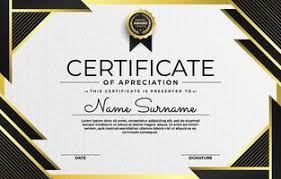Ensuring Workplace Safety: The Impact of EHS Compliance Audits
The Importance of EHS Compliance Audits in Ensuring Workplace Safety
Environmental, health, and safety (EHS) compliance audits play a crucial role in maintaining a safe and healthy work environment for employees. These audits are systematic examinations of a company’s operations to ensure they comply with relevant laws, regulations, and standards related to environmental protection, occupational health, and workplace safety.
One of the primary objectives of an EHS compliance audit is to identify potential risks and hazards within the workplace that could lead to accidents, injuries, or environmental damage. By conducting regular audits, companies can proactively address issues before they escalate into more significant problems.
Furthermore, EHS compliance audits help organizations demonstrate their commitment to upholding legal requirements and industry best practices. Compliance with regulations not only safeguards employees’ well-being but also protects the company from potential fines, lawsuits, and reputational damage that may result from non-compliance.
During an EHS compliance audit, trained professionals assess various aspects of a company’s operations, including but not limited to:
- Workplace safety protocols
- Hazardous material handling procedures
- Emergency response plans
- Air and water quality management
- Waste management practices
After completing the audit, a detailed report is typically generated outlining areas of non-compliance and recommending corrective actions. This information allows companies to prioritize improvements and allocate resources effectively to address identified deficiencies.
In addition to ensuring regulatory compliance and mitigating risks, EHS compliance audits can also lead to operational efficiencies and cost savings. By identifying opportunities for process optimization and waste reduction, companies can enhance their sustainability efforts while improving their bottom line.
In conclusion, EHS compliance audits are essential tools for promoting a culture of safety and environmental responsibility within organizations. By investing in regular audits and taking proactive steps to address findings promptly, companies can create safer workplaces, protect the environment, and uphold their commitment to corporate social responsibility.
Understanding EHS Compliance Audits: Key Questions and Insights
- What is an EHS compliance audit?
- Why are EHS compliance audits important?
- Who conducts EHS compliance audits?
- What are the key areas covered in an EHS compliance audit?
- How often should EHS compliance audits be conducted?
- What are the consequences of non-compliance with EHS regulations?
What is an EHS compliance audit?
An EHS compliance audit is a comprehensive evaluation process conducted to assess an organization’s adherence to environmental, health, and safety regulations and standards. This systematic examination helps identify potential risks, hazards, and areas of non-compliance within the workplace related to environmental protection, occupational health, and safety practices. By conducting EHS compliance audits regularly, companies can ensure that they meet legal requirements, mitigate risks, enhance workplace safety, protect the environment, and demonstrate their commitment to upholding industry best practices.
Why are EHS compliance audits important?
EHS compliance audits are vital for organizations to ensure the safety and well-being of their employees, protect the environment, and uphold legal requirements. These audits help identify potential risks and hazards within the workplace, allowing companies to proactively address issues before they escalate. By demonstrating a commitment to compliance with regulations and industry standards, organizations not only safeguard their workforce but also mitigate the risk of fines, lawsuits, and reputational damage that may result from non-compliance. EHS compliance audits also promote operational efficiencies, cost savings, and sustainability efforts by identifying opportunities for improvement in processes and resource management. Overall, EHS compliance audits play a crucial role in fostering a culture of safety, environmental responsibility, and regulatory adherence within organizations.
Who conducts EHS compliance audits?
EHS compliance audits are typically conducted by internal or external professionals with expertise in environmental, health, and safety regulations. In many organizations, dedicated EHS teams or consultants are responsible for planning, executing, and reporting on compliance audits. These individuals possess the necessary knowledge and skills to assess workplace practices, identify areas of non-compliance, and recommend corrective actions to ensure adherence to relevant laws and standards. By entrusting EHS compliance audits to qualified experts, companies can effectively monitor their regulatory compliance status and proactively address any potential risks or deficiencies in their operations.
What are the key areas covered in an EHS compliance audit?
During an EHS compliance audit, several key areas are typically covered to ensure that a company’s operations align with environmental, health, and safety regulations. These areas may include assessing workplace safety protocols to prevent accidents and injuries, reviewing hazardous material handling procedures to minimize risks, evaluating emergency response plans to ensure preparedness for unforeseen events, examining air and water quality management practices to protect the environment, and scrutinizing waste management procedures to promote sustainability. By focusing on these critical aspects, EHS compliance audits help organizations identify potential gaps in compliance and implement necessary measures to enhance overall safety and environmental performance.
How often should EHS compliance audits be conducted?
The frequency of conducting EHS compliance audits depends on various factors, including the nature of the industry, regulatory requirements, and the organization’s risk profile. In general, it is recommended that EHS compliance audits be conducted at least annually to ensure ongoing adherence to environmental, health, and safety regulations. However, industries with higher risks or rapidly changing regulations may benefit from more frequent audits, such as semi-annually or quarterly. Ultimately, the key is to establish a regular audit schedule that aligns with the organization’s compliance goals and helps identify and address potential issues proactively.
What are the consequences of non-compliance with EHS regulations?
Non-compliance with environmental, health, and safety (EHS) regulations can have serious consequences for businesses. Failure to adhere to EHS regulations may result in fines, penalties, and legal actions imposed by regulatory authorities. Beyond financial implications, non-compliance can also lead to reputational damage, loss of customer trust, and diminished employee morale. Additionally, overlooking EHS requirements can increase the risk of workplace accidents, injuries, and environmental harm, jeopardizing the well-being of employees and the surrounding community. By prioritizing EHS compliance through regular audits and proactive measures, organizations can avoid these detrimental outcomes and demonstrate their commitment to operating responsibly.


